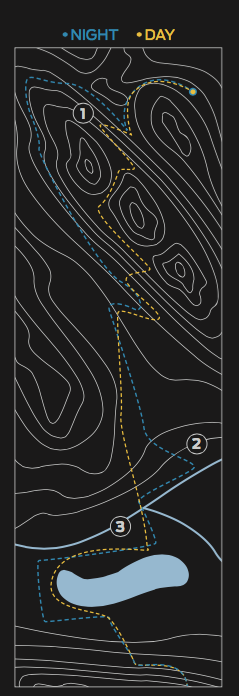How to Navigate at Night

'andy'
Hone your navigation skills and find your way anywhere. Learn everything from map-and-compass basics to staying on track in the most challenging terrain in BACKPACKER’s online Backcountry Navigation course. To register, go to learn.outsideonline.com
Find Yourself
Determine your precise position before the sun vanishes. Not sure? Triangulate by taking bearings off two landmarks and transferring them to your map. You’re located where they intersect
Amplify your night vision
Offset your gaze 10 to 15 degrees from the point you want to view. This utilizes light-sensing rod cells on the edges of your retina to let you pick up more detail in the dark
Leapfrog
Use your partner as a landmark. Direct him ahead as far as possible along your bearing to mark your place. When he’s just out of your headlamp’s reach, catch up. Repeat.
Pace off
When your route leaves little margin for error, like when navigating back to a trail junction, calculate the length of your stride and count steps. On your map, track distance traveled to accurately measure progress

Go big
Locate small targets by way of large ones. Looking for a mountainside campsite? Go to the summit first (if it’s safe and easy to do so), then get a compass bearing and work down toward the site from there.
Pro tip: Bring a lanyard
“You might trip, and a compass tumbling down a rock face isn’t so helpful,” Jennings says.
Travel smart
1. Go long. Opt for easy terrain even if it means taking a longer route and going around ridges or scree slopes you’d go over in daylight. 2. Aim to miss. On your map, find a fixed “handrail” like a stream or ridge that leads past your destination. Navigate first to that feature, then follow it to your mark. 3. Simplify. Use 90-degree turns to go around obstacles. Count your steps to return accurately to your bearing
Hunker down for the night
Terrain getting steep? Dangerous weather moving in? Better call it quits before someone gets hurt.